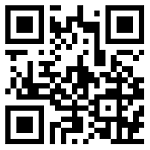提醒:点这里加小编微信(领取免费资料、获取最新资讯、解决考教师一切疑问!)
【动词的时态(三)】
一般将来时 过去将来时
1.一般将来时
(1)一般将来时表示将要发生的动作或存在的状态。常与表示将来的时间状语连用:tomorrow, next week, next month, in a few days, from now on。如:
I’m going to visit the museum this Sunday.
I’ll be there in half an hour.
We’ll arrive tomorrow.
(2)一般将来时的构成
① be going to + 动词原形。Be随主语人称和数的变化而变化,否定句在be后面加not, 疑问句是将be放到主语之后。例如:
It’s going to be fine tomorrow.
He isn’t going to speak at the meeting.
What are you going to do next?
② will +动词原形。Will可以和各种人称及数的主语连用。否定句在will后加not,缩写成won’t,疑问句需将will提至主语之前。例如:
We will have a basketball match next week.
Will you come to the party?
I won’t lend it to you.
③ shall + 动词原形。此结构常用于主语为第人称I / we的句中,疑问句表示提建议或征求意见。如:
When and where shall we meet?
Shall I turn on the TV?
(3) 一般将来时的基本用法。提醒:点这里加小编微信(领取免费资料、获取最新资讯、解决考教师一切疑问!)









